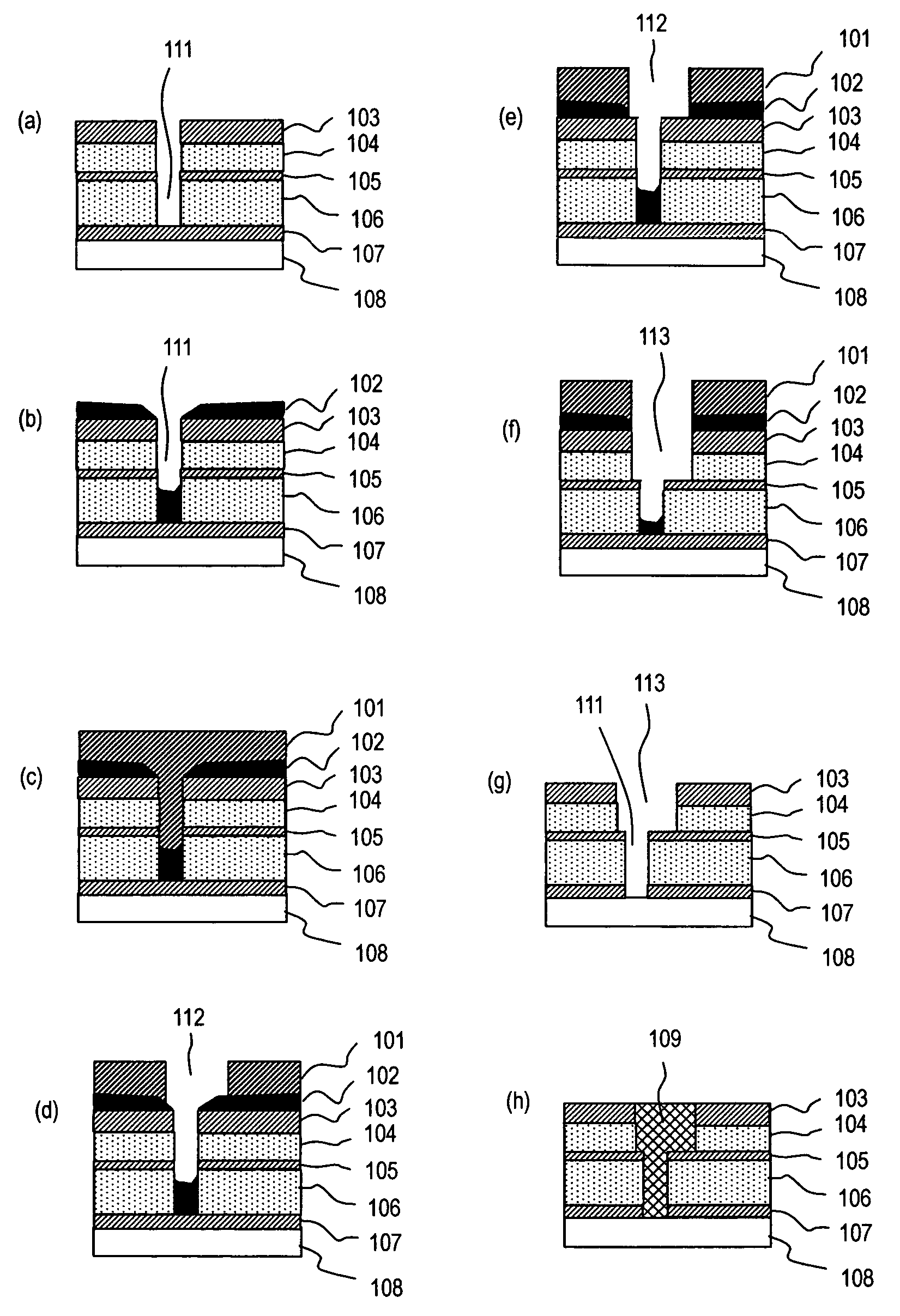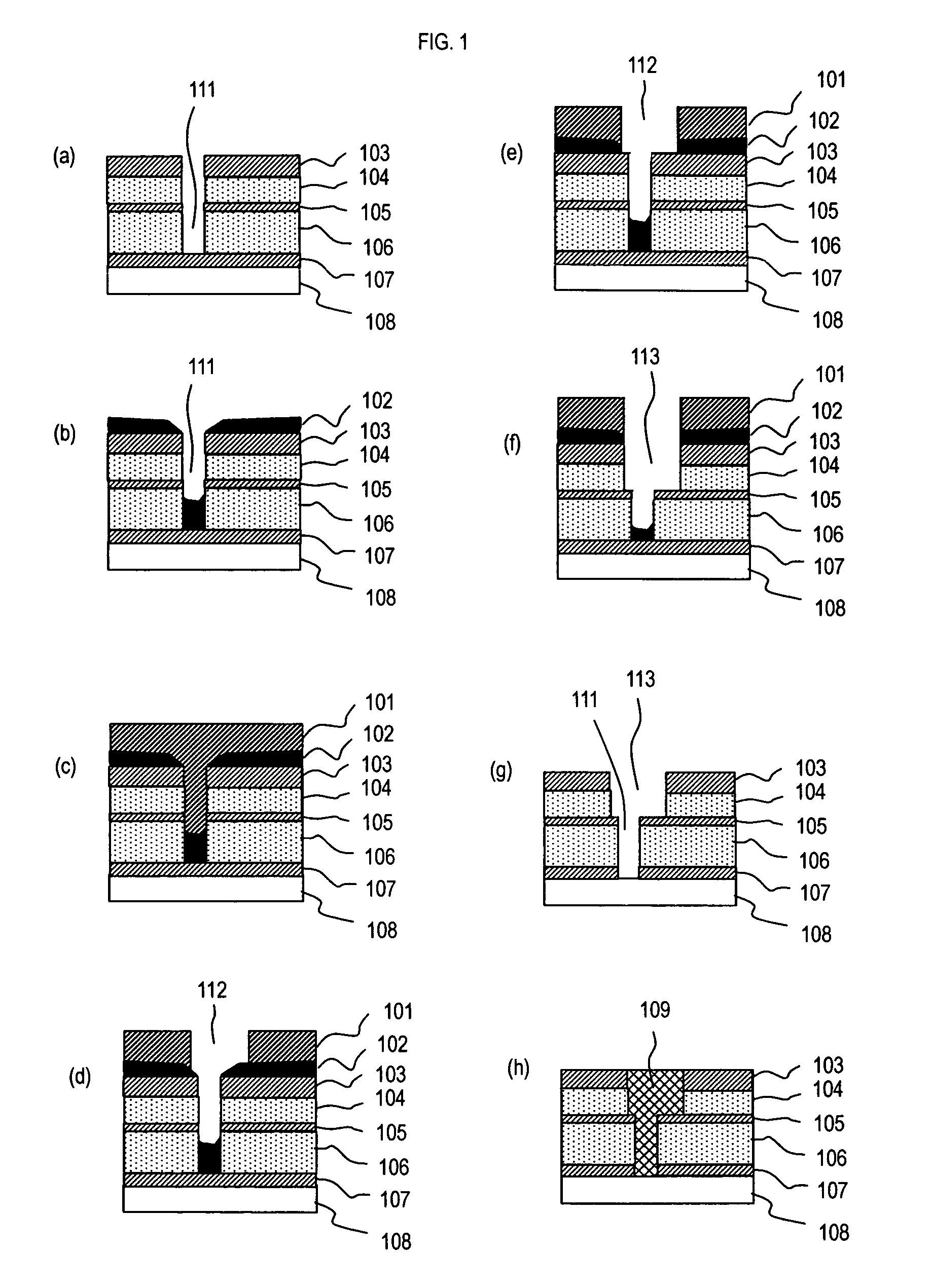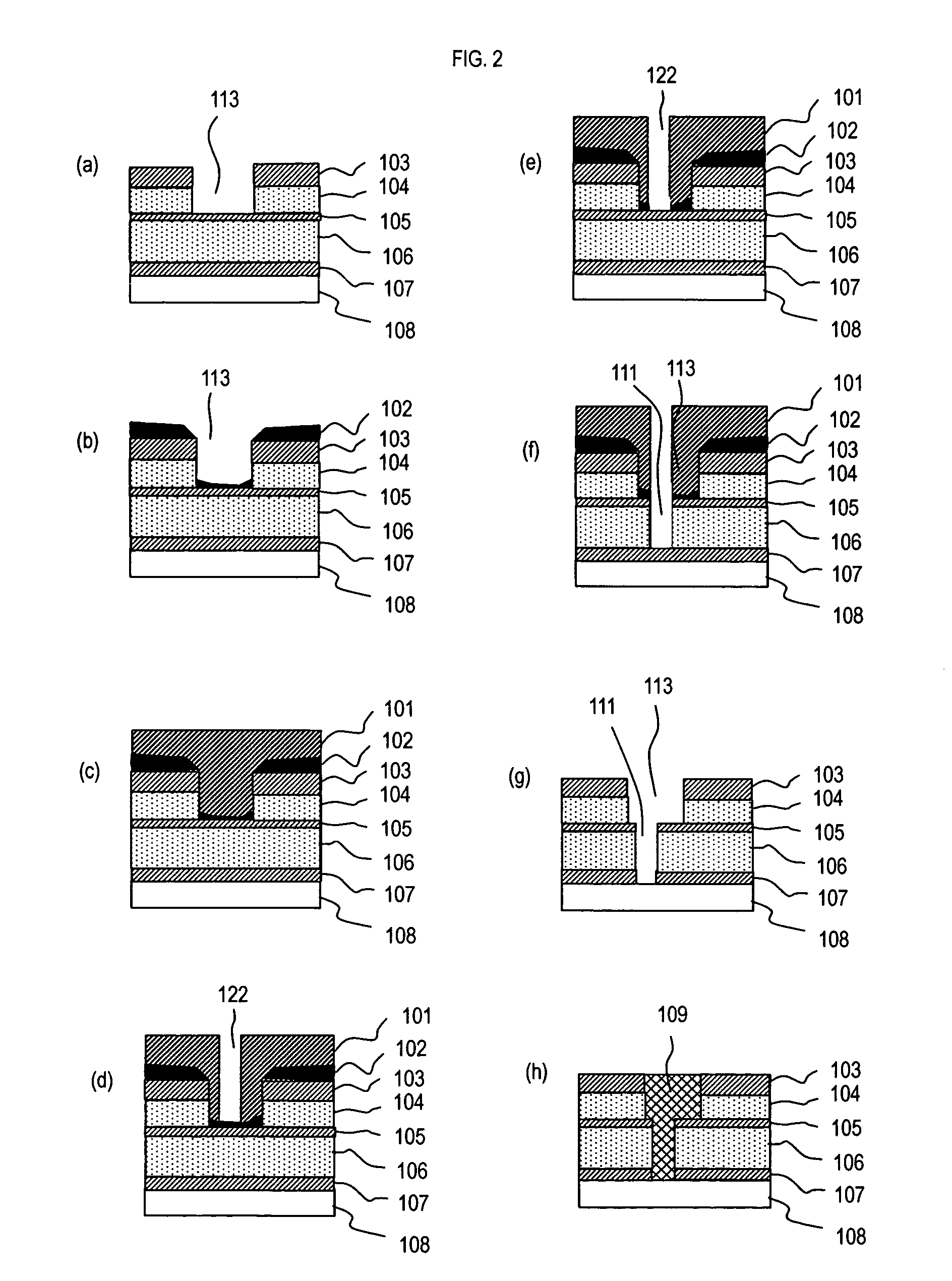Chemically amplified resist composition, process for manufacturing semiconductor device and patterning process
a semiconductor device and composition technology, applied in the field of chemical amplified resist composition, can solve the problems of less reliable semiconductor devices, inability to shape the interlayer insulating film into the desired shape, so as to prevent the deterioration of resist sensitivity, reduce the fluctuation of patterning resolution, and improve the effect of processing properties
- Summary
- Abstract
- Description
- Claims
- Application Information
AI Technical Summary
Benefits of technology
Problems solved by technology
Method used
Image
Examples
embodiment 1
[0114]This embodiment illustrates a dual damascene process employing a via-first method, using a chemically amplified resist composition. FIG. 1 is cross-sectional views showing a manufacturing process for a semiconductor device according to this embodiment.
[0115]First, on a lower interconnection layer 108 are sequentially deposited a first etching stopper film 107, a first interlayer insulating film 106, a second etching stopper film 105, a second interlayer insulating film 104 and a third interlayer insulating film 103. Then, using well-known lithography and etching technique, a via-hole 111 is formed in the third interlayer insulating film 103, the second interlayer insulating film 104, the second etching stopper film 105 and the first interlayer insulating film 106 (FIG. 1(a)).
[0116]Then, an anti-reflection film 102 is formed on the third interlayer insulating film 103 and the first etching stopper film 107, during which the via-hole 111 is partly or totally buried with the anti...
embodiment 2
[0126]The interconnection structure in FIG. 1(h) may be also manufactured by a so-called trench-first method among dual damascene processes. There will be described a copper interconnection structure manufactured by a trench-first method with reference to FIG. 2. In this embodiment, similar components to those in Embodiment 1 are identified with the same symbols without any description as appropriate.
[0127]As described in Embodiment 1, on a lower interconnection layer 108 are sequentially deposited a first etching stopper film 107, a first interlayer insulating film 106, a second etching stopper film 105, a second interlayer insulating film 104 and a third interlayer insulating film 103. Then, using well-known lithography and etching technique, an interconnection trench 113 is formed in the third interlayer insulating film 103 and the second interlayer insulating film 104 (FIG. 2(a)).
[0128]Then, an anti-reflection film 102 is formed on the third interlayer insulating film 103 and th...
embodiment 3
[0133]The resist composition used in Embodiment 1 or 2 can be applied to a via-first dual damascene process using a three-layer resist method. There will be described this process with reference to FIG. 3.
[0134]First, on a lower interconnection layer 108 are sequentially deposited a first etching stopper film 107 and an interlayer insulating film 115. Then, using well-known lithography and etching technique, a via-hole 111 is formed in the interlayer insulating film 115 (FIG. 3(a)).
[0135]Then, an anti-reflection film (not shown) is formed on the interlayer insulating film 115 and the first etching stopper film 107, during which the via-hole 111 is partly or totally buried with the anti-reflection film. Then, on the anti-reflection film is applied a three-layer resist film consisting of a first resist film 116, a second resist film 117 and a third resist film 118, in which the first resist film 116 comprises the resist composition described above. Then, in the third resist film 118 i...
PUM
| Property | Measurement | Unit |
|---|---|---|
| specific dielectric constant | aaaaa | aaaaa |
| wavelength | aaaaa | aaaaa |
| wavelength | aaaaa | aaaaa |
Abstract
Description
Claims
Application Information
 Login to View More
Login to View More - R&D
- Intellectual Property
- Life Sciences
- Materials
- Tech Scout
- Unparalleled Data Quality
- Higher Quality Content
- 60% Fewer Hallucinations
Browse by: Latest US Patents, China's latest patents, Technical Efficacy Thesaurus, Application Domain, Technology Topic, Popular Technical Reports.
© 2025 PatSnap. All rights reserved.Legal|Privacy policy|Modern Slavery Act Transparency Statement|Sitemap|About US| Contact US: help@patsnap.com



